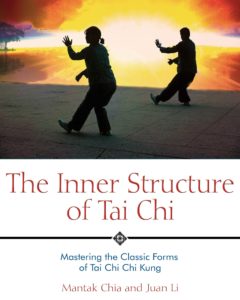Three Tai Chi Chi Kung Principles for Daily Life
In Master Chia’s book, ‘Tai Chi Chi Kung,’ there is a great list of principles for proper body alignment and inner structure of our tai chi practice. Sometimes, learning tai chi can feel a bit like learning golf or another complicated process, where we are given a long mental check-list of ‘correct’ ways to perform something. These mental lists can cause us to be so concerned with not doing it ‘wrong’ that we forget to be in our bodies and actually enjoy the hobby we set out to practice.
Fortunately, Master Chia outlines the principles of the Tai Chi Chi Kung (TCCK) practice in a way that the principles can be practiced one at a time, in daily life, or into any movement or meditation discipline. In this article, we will look at a handful of these principles and discuss ways to practice these in a chi kung practice and daily life.
The first principle is to stay rooted in each movement. In TCCK, this refers to creating a connection between the nine points of the feet and the Earth (the nine points are the five toes, the ball of the foot, the heel, and both sides). While at your computer, for instance, this can mean sitting with your feet flat on the floor, which causes more awareness of your overall posture and leads to less slouching. In your life’s emotions, staying rooted in each movement means to remain down-to-earth, practical, and to stay close to the present moment.
Keeping a low center of gravity is another principle that reminds us to ‘keep our mind where our body is.’ Before discovering the Healing Tao, it was often the case that mental energy would keep my awareness floating above my body in some problem of the day or usually some problem of some other day. Often, there wasn’t even a problem; I was just creating mental constructs that I called problems because I wasn’t getting what I wanted. Life flows more smoothly when I focus on ‘the way’ and not on ‘my way’ only. Maintaining a low center of gravity keeps me in my space and reminds me to stay close to the present reality. In our chi kung practices, this refers to breathing into our lower abdomen, allowing our diaphragm to move up and down, gently massaging our internal organs and exercising our lungs to their full capacity.
The last principle of Tai Chi Chi Kung we’ll discuss here is to clearly distinguish between Yin and Yang. In tai chi, this refers to expanding fully, opening all of our joints and extending our tendons and muscles as we perform a two hand push, a press, or a ward-off movement. The full extensions then lead to a full contraction as we sink our body back into the earth during the Yin phase which follows the movement. In life, this can be as simple as working fully when we’re at work and resting when we’ve chosen to rest. Many times, we don’t fully do either, as we daydream at work about an upcoming vacation or planning the next break. Similarly, our free-time may be filled by thoughts of projects ‘hanging over our head’ or ‘what we could have/would have/should have done.’
Furthermore, during the cycle of the seasons, we want to remember that it isn’t likely that we will accomplish as much during winter as we will during the long days of summer. Therefore, let’s remember to let our Yang be Yang and Yin be Yin. By clearly distinguishing between Yin and Yang, we will more naturally relax, move in the flow during our activities, and take it easy on ourselves.

1 thought on “Three Tai Chi Chi Kung Principles for Daily Life”